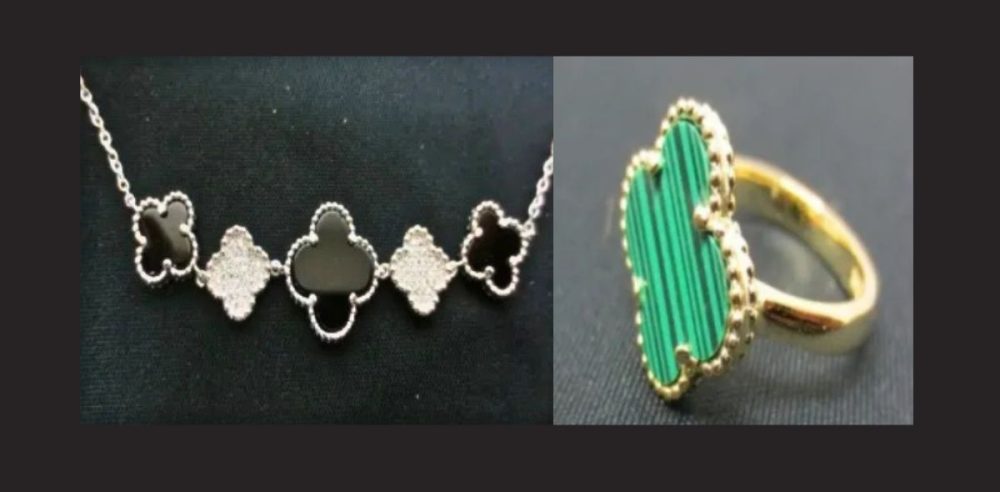Customs and Border Protection (CBP) officers at the El Paso port of entry recently intercepted a large shipment of counterfeit designer jewelry, which, if the knockoffs had been authentic, would have been valued at more than $9.2 million.
The shipment, coming into America from China, was flagged on April 9 before it reached a residential address in the El Paso area, according to a CBP media release.
The shipment contained 1,708 knockoff jewelry pieces, including rings, necklaces, earrings, and bracelets closely resembling the extremely popular “Alhambra” collection by luxury brand Van Cleef & Arpels.
According to CBP, the package was initially declared ordinary “accessories and bracelets” worth only $15,480. After coordinating with the trademark holder for Van Cleef & Arpels, to confirm the items were not genuine, CBP officially seized all of the counterfeit goods on April 21 before they could enter the market.
“Buying counterfeit luxury jewelry may seem like a bargain, but it may also be fueling criminal enterprises involved in money laundering, forced labor, and even organized crime,” said CBP El Paso Director of Field Operations Hector Mancha. “Counterfeit goods are generally poor-quality products that cost U.S. businesses billions of dollars a year while robbing our country of jobs and tax revenues.”
CBP officials spoke on counterfeit goods’ big impact on the economy. These goods are offered through a growing variety of online stores that often fail to provide legitimate item descriptions or return policies.
“Officers inspect arriving international parcels for a variety of reasons to include protecting American consumers from potential safety violations and rooting out counterfeit goods that may be supporting an underground economy that thrives on deception and exploitation,” Mancha added.
The CBP went on to warn online buyers to exercise extreme caution when negotiating deals that appear “too good to be true.”
The agency also recommends purchasing directly from brands or authorized retailers, especially if consumers are making high-priced purchases without diligent research on the seller.


